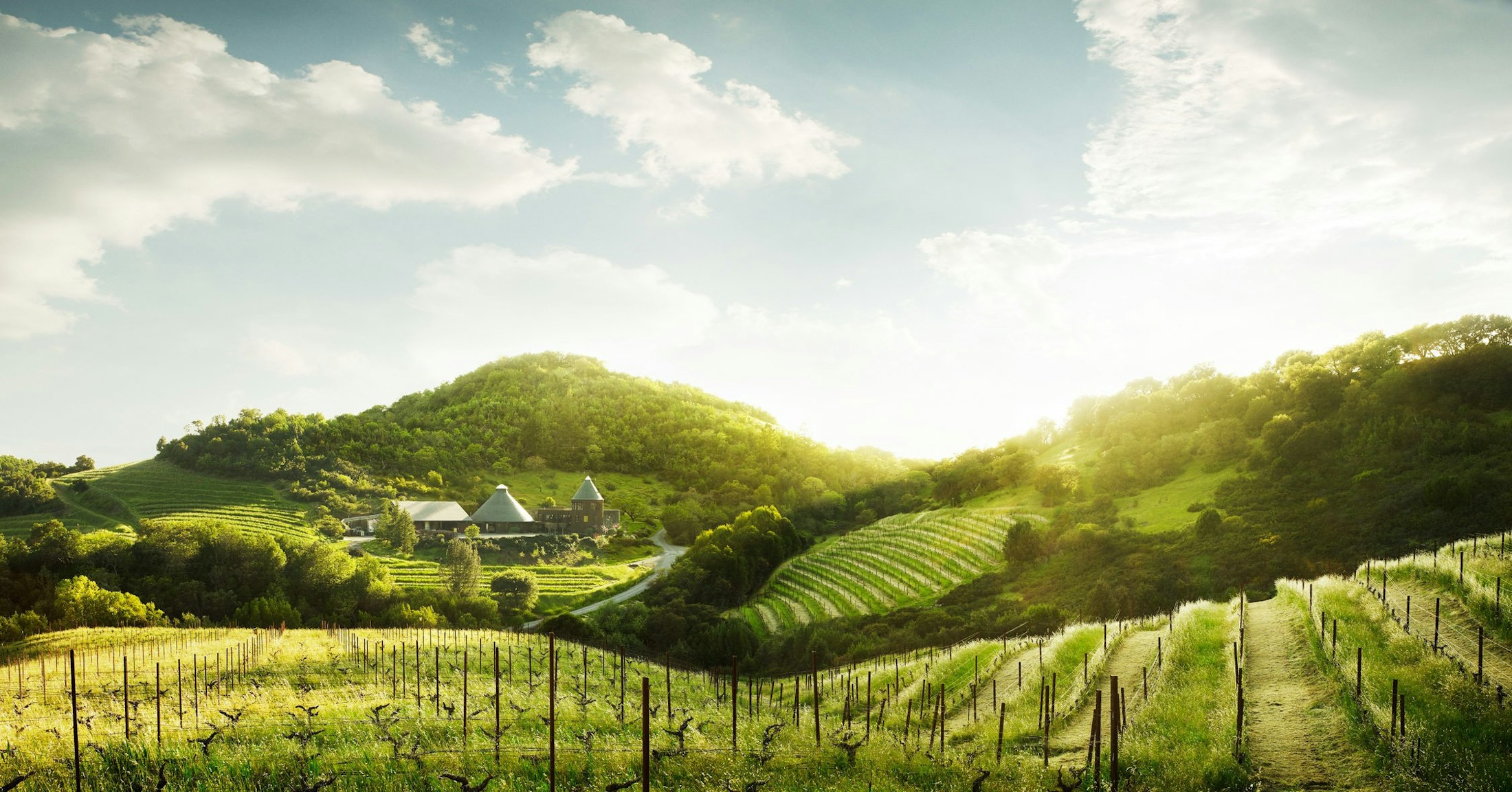- IThe Birth
- IITerroir
- IIICharacters
- IVWinery
- VChallenge
- VIRepris
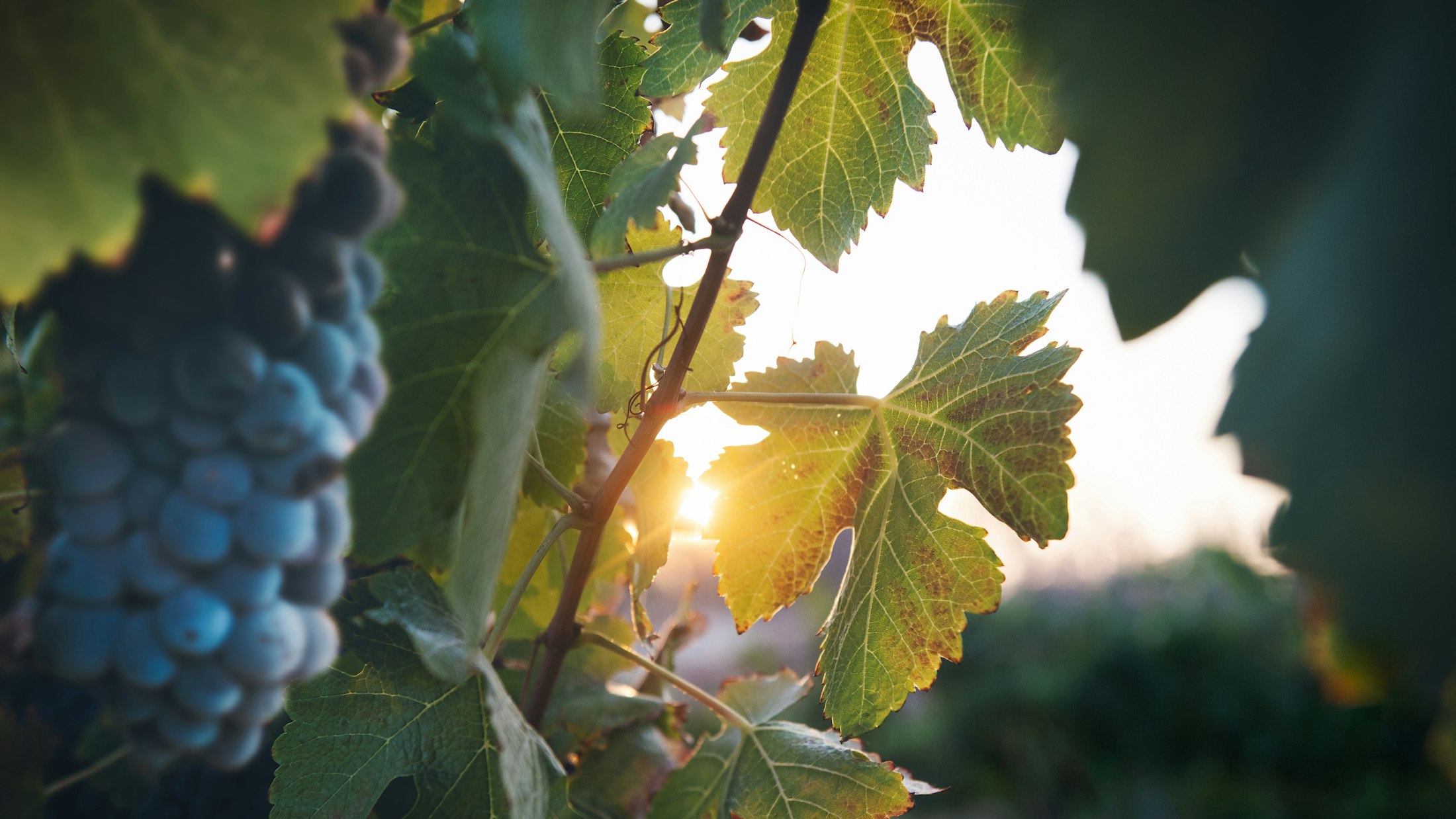
Chapter IThe Birth ofCALIFORNIA VITICULTURE
Sonoma is known not only as the birthplace of California but of its wine industry as well.
Though the first vines were planted by missionaries in Southern California around 1779 to provide wine for Mass, viticulture quickly spread north, with Russian settlers planting vines as early as 1817.
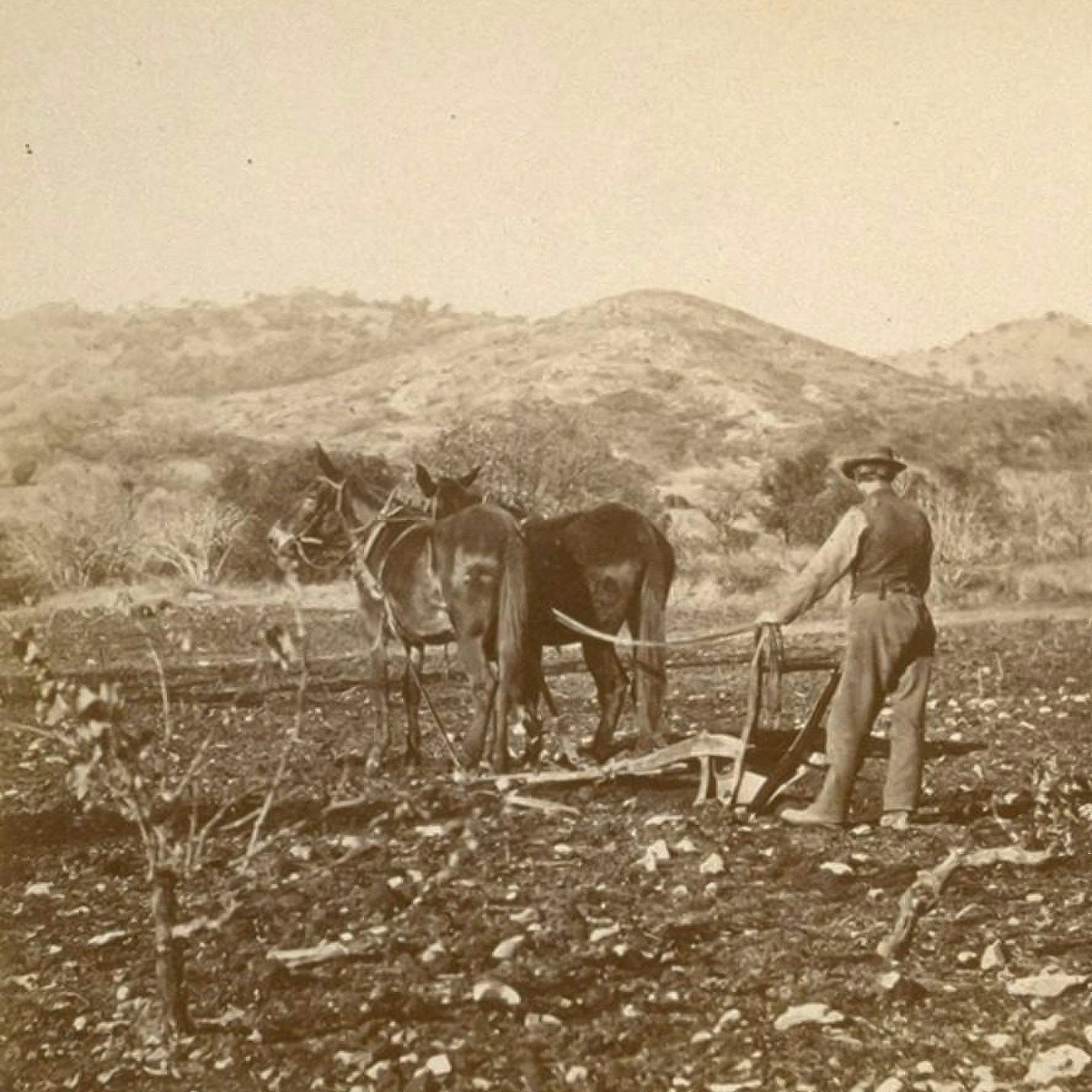
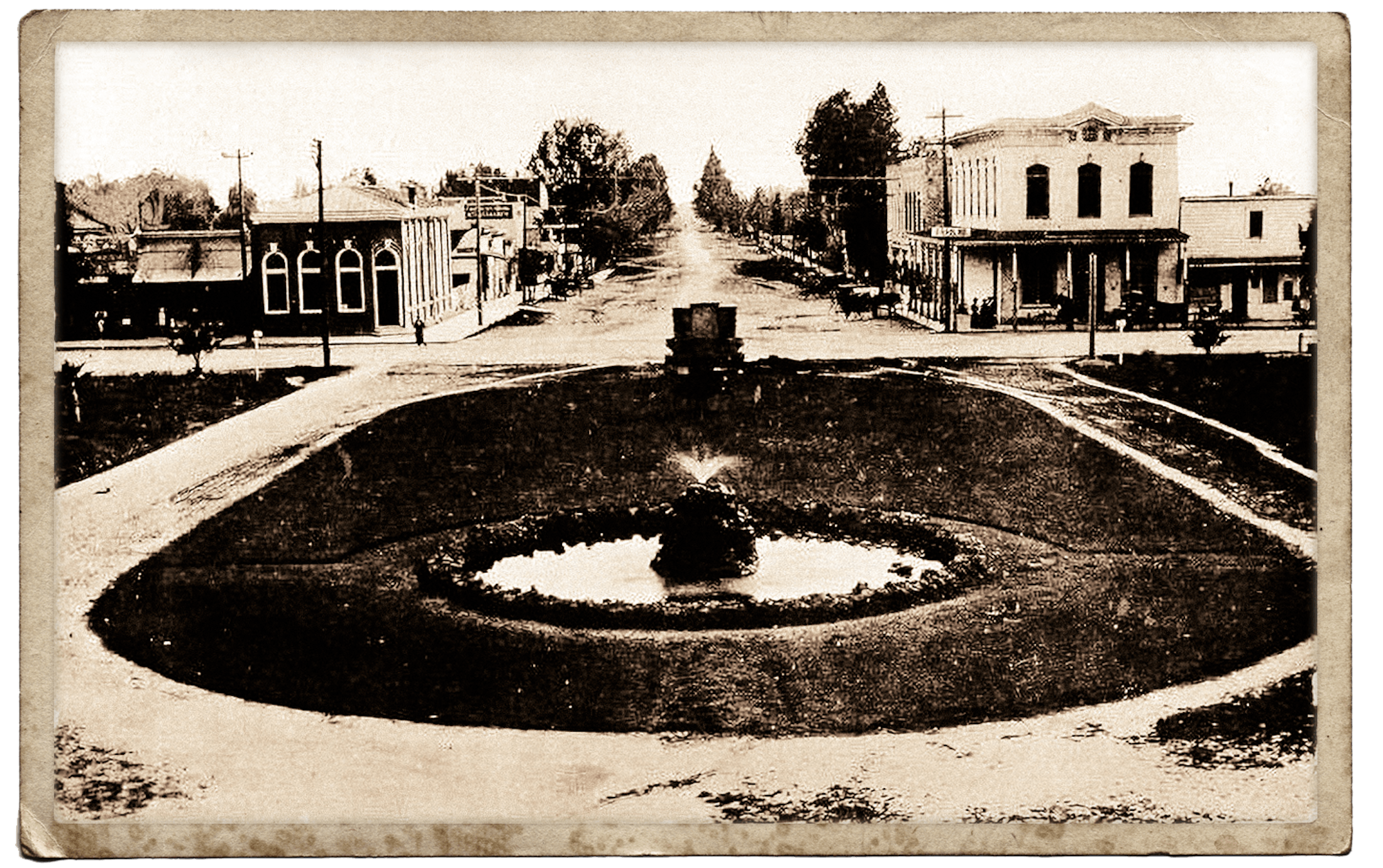
Sonoma Plaza, site of the Bear Flag Revolt 1840
By the 1840s the California territory, teeming with frontiersmen and settlers, was in political flux. Knowing war with Mexico was imminent, a small group of settlers rode to Sonoma and proclaimed a “California Republic” in 1846. On the Sonoma Plaza they raised the now famous Bear Flag, setting in motion the notorious Bear Flag Revolt, and in 1848 California became American territory after the Mexican-American War.
California Gold Rush
As thirsty miners flooded into the state seeking riches, demand for wine exploded in and around San Francisco. This extraordinary demand set the stage for California’s early wineries to thrive. Early pioneers included Agoston Haraszthy, a Hungarian immigrant who, dreaming of “purple gold” in the Sonoma hills, acquired 800 acres just outside of town in 1856 and planted Sonoma’s first vineyards.
Top Right: Agoston Haraszthy planted the first vineyards in Sonoma.
Right: Farmers harvesting Sonoma Vineyard.
Below: San Francisco's Golden Gate before its iconic bridge was built.


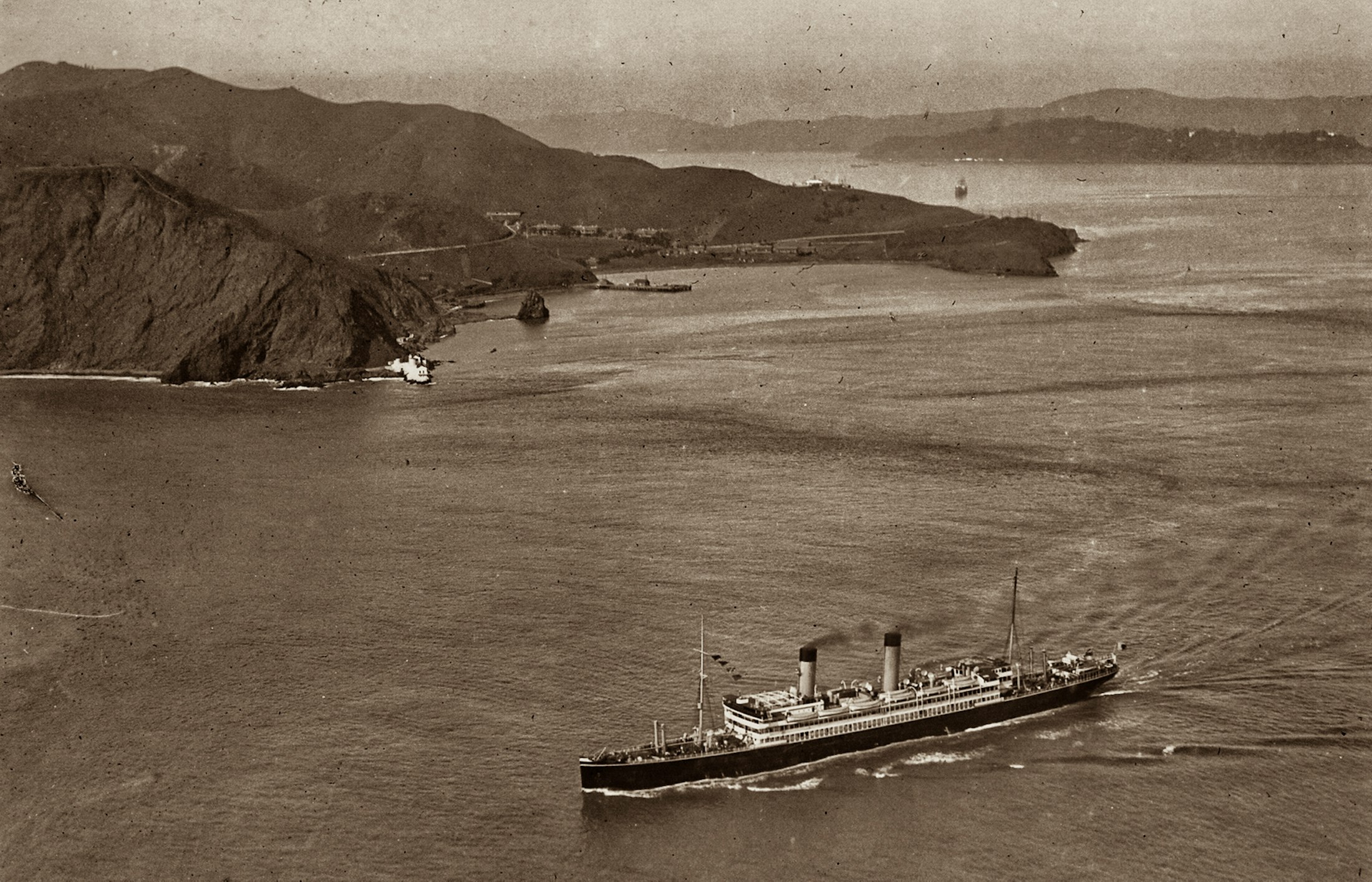
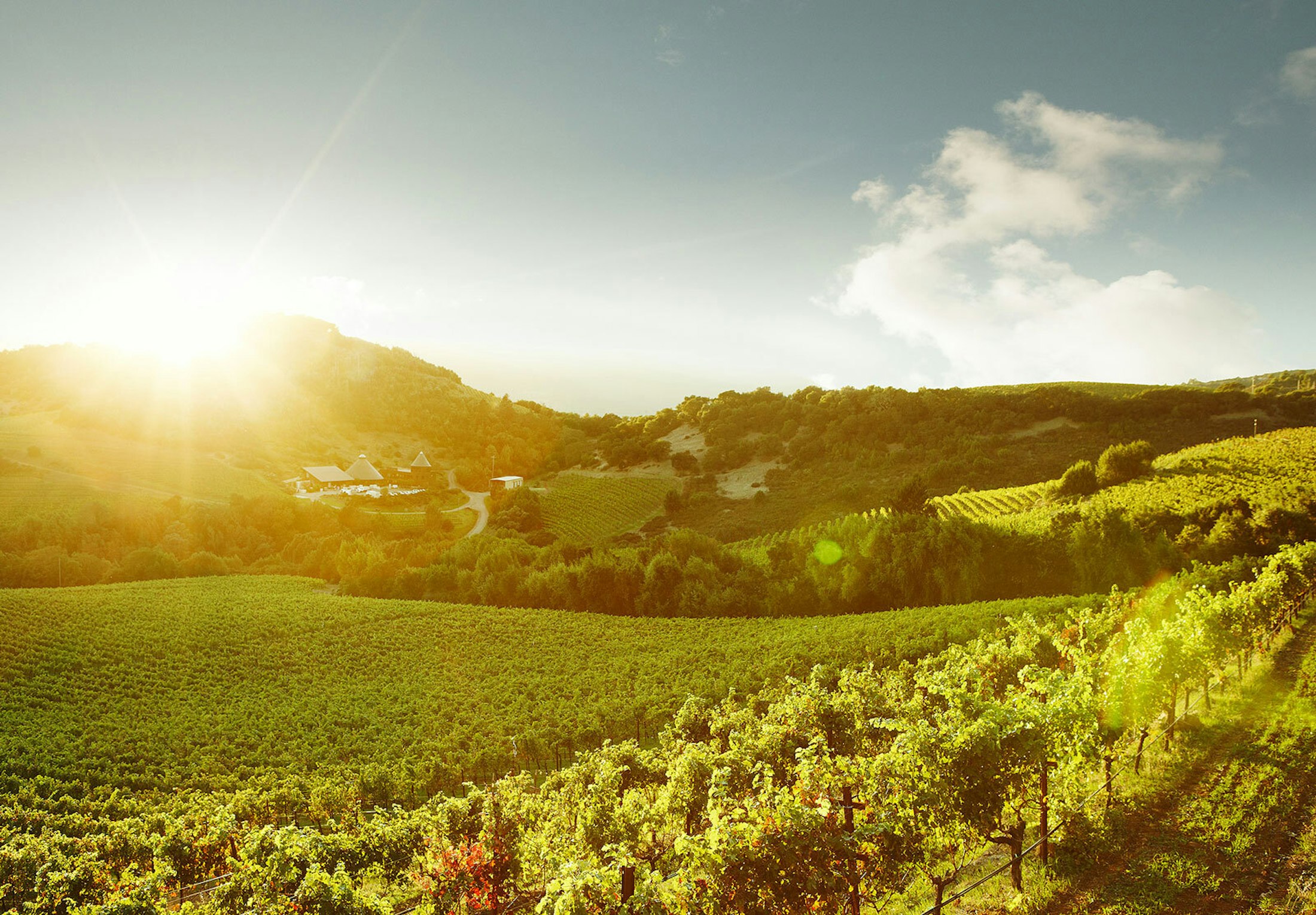
Chapter IIDiscovering anExceptional Place
With west-facing sunny slopes high above the fog line and cool evening breezes funneled in from the Pacific Ocean, the slopes of Moon Mountain offered all the unique qualities required for world-class viticulture.
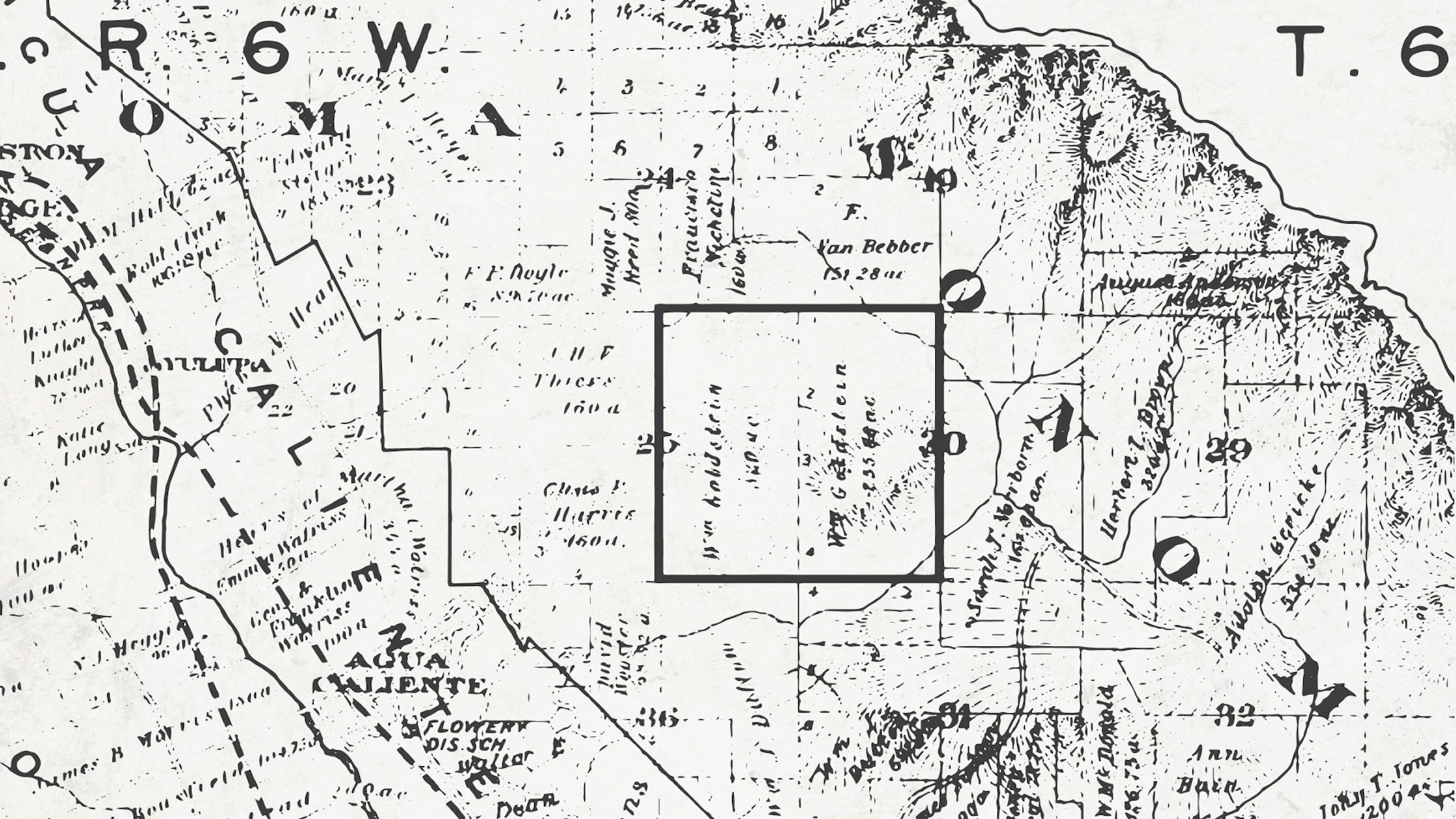
Laying The Groundwork Goldstein & Dreyfus
In 1880 Emmanuel Goldstein, one of the early pioneers of grape growing in America, had a virtually unlimited landscape of options for choosing where to plant his vineyard. After careful consideration, drawing on centuries of experience and experimentation from Europe, he identified the volcanic slopes below Moon Mountain as the optimal terroir for growing wine grapes. With west-facing sunny slopes high above the fog line and cool evening breezes funneled in from the Pacific Ocean through the Petaluma Gap, the area offered all the unique qualities required for world-class viticulture. More than 100 years later, the specific land he selected for his Goldstein Ranch would go on to become two exceptional vineyards: Moon Mountain Vineyard and Monte Rosso Vineyard. Few people know that these two iconic, neighboring vineyards were once part of the same property.



Above: Emmanuel L. Goldstein
Right: Benjamin Dreyfus
Goldstein went on to partner with businessman Benjamin Dreyfus, who years earlier had created an agricultural cooperative of 47 independent wineries to promote viticulture and winemaking called the Anaheim Colony. When Dreyfus moved to San Francisco to start the Anaheim Winegrowers Association, Goldstein and Dreyfus expanded into Sonoma together. In 1881 the two pioneers built a winery that would become known as Mt. Pisgah on the Goldstein Ranch. The company they formed, B. Dreyfus & Co., was one of 7 founding firms of the California Wine Association and their efforts helped drive the progress of California wine until Prohibition.
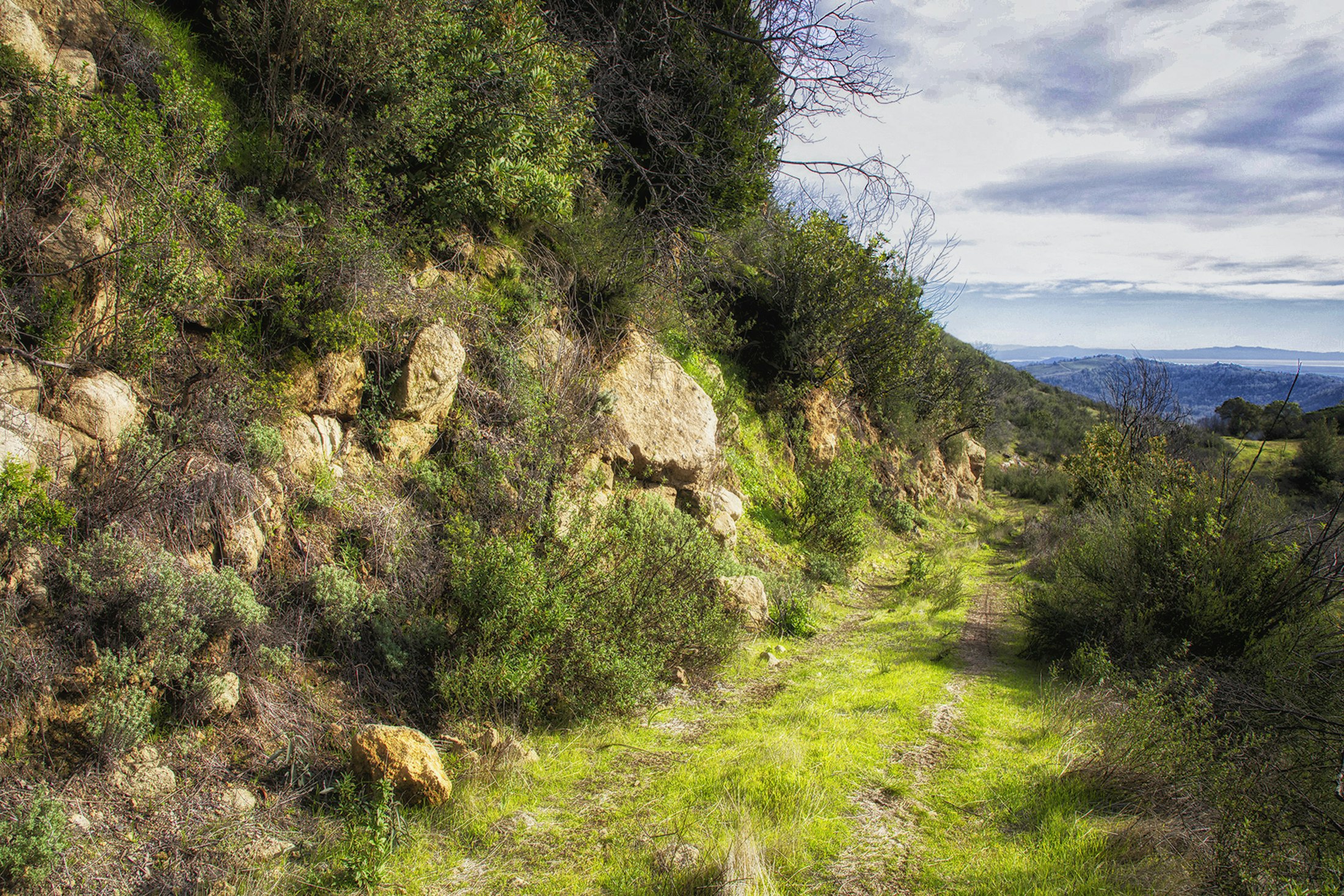
TheGoldsteinTrail
Chiseled into the side of the mountain, The Goldstein Trail was once the main artery connecting Napa and Sonoma.
The very first road connecting the Sonoma and Napa valleys, the Goldstein Trail still winds its way through our Moon Mountain Vineyard property as an enduring testament to this land’s connection to the origins of California winemaking.
The views from the Goldstein Trail are breathtaking, and on clear days one can see the Golden Gate Bridge and the San Francisco skyline from the upper parts of Moon Mountain Vineyard. The Goldstein Trail is steep, narrow and treacherous, a vivid reminder that this rugged land requires grit and perseverance to succeed.

Steam-powered road roller found close to the original Goldstein Trail at Moon Mountain Vineyard. Close inspection finds the old machine riddled with bullet holes.
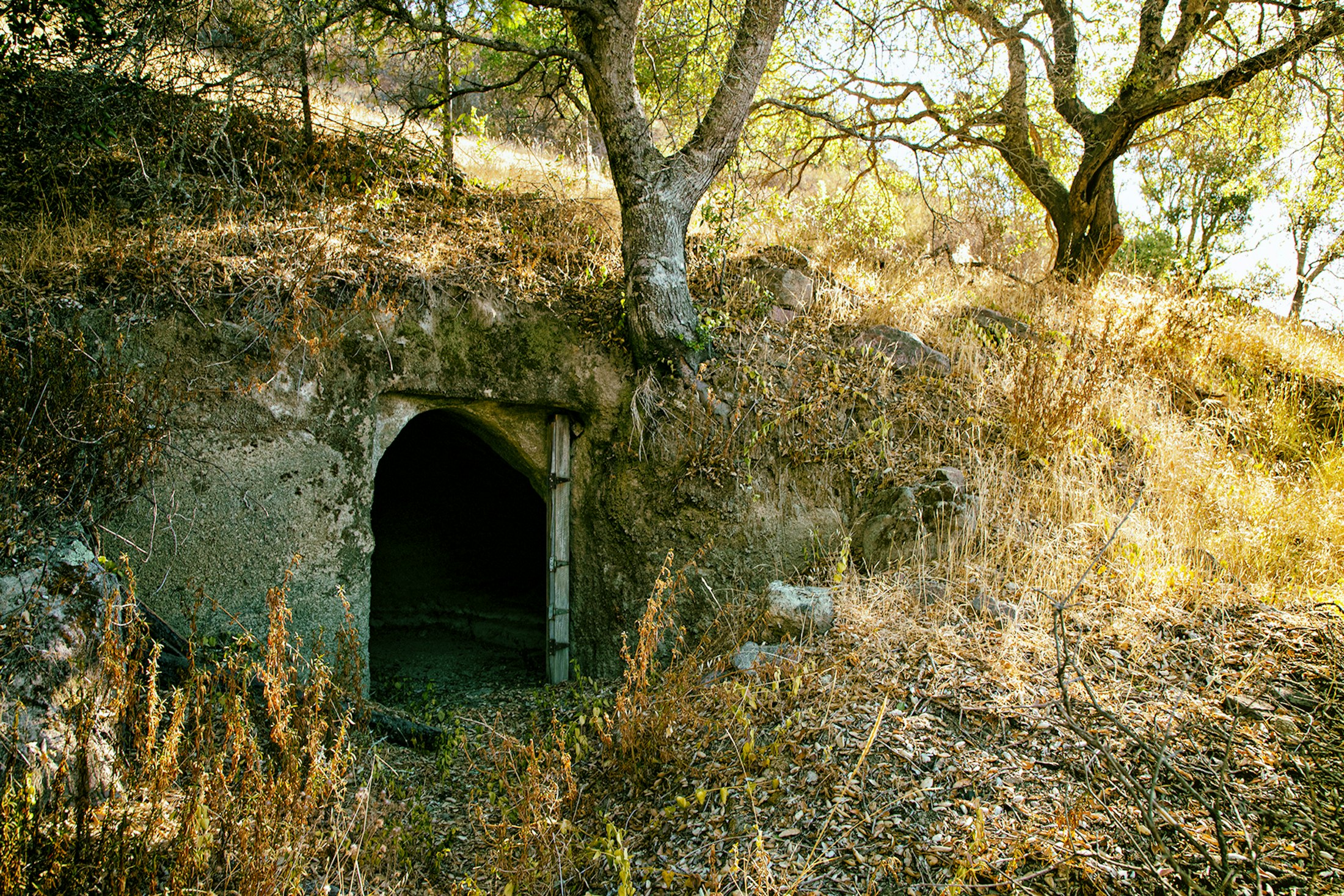
Our mountain is home to its share of secrets. One of them is a long-abandoned distillery, likely from the days of Prohibition. No records exist of what was produced there at the time, but the distillery’s proximity to a hidden hand-dug cave just off the Goldstein Trail offers clues to the outlaw origins of some of Sonoma’s early history.
Just off the Goldstein Trail, hidden in a grove of ancient redwoods, is a natural spring that flows all year. Fed by an underground aquifer, the spring provided fresh water to the early inhabitants of the mountain and to exhausted travelers on the Goldstein Trail.
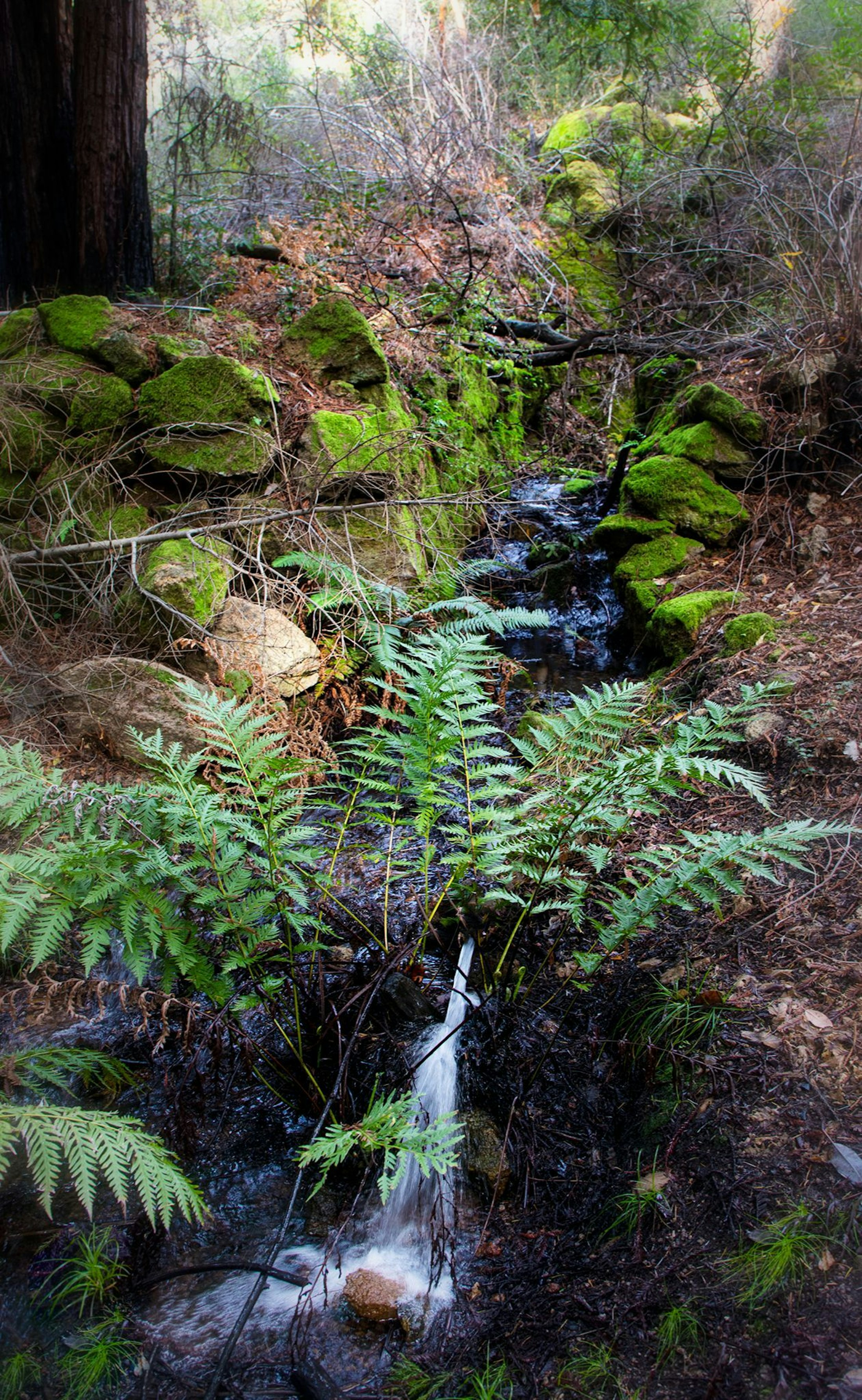
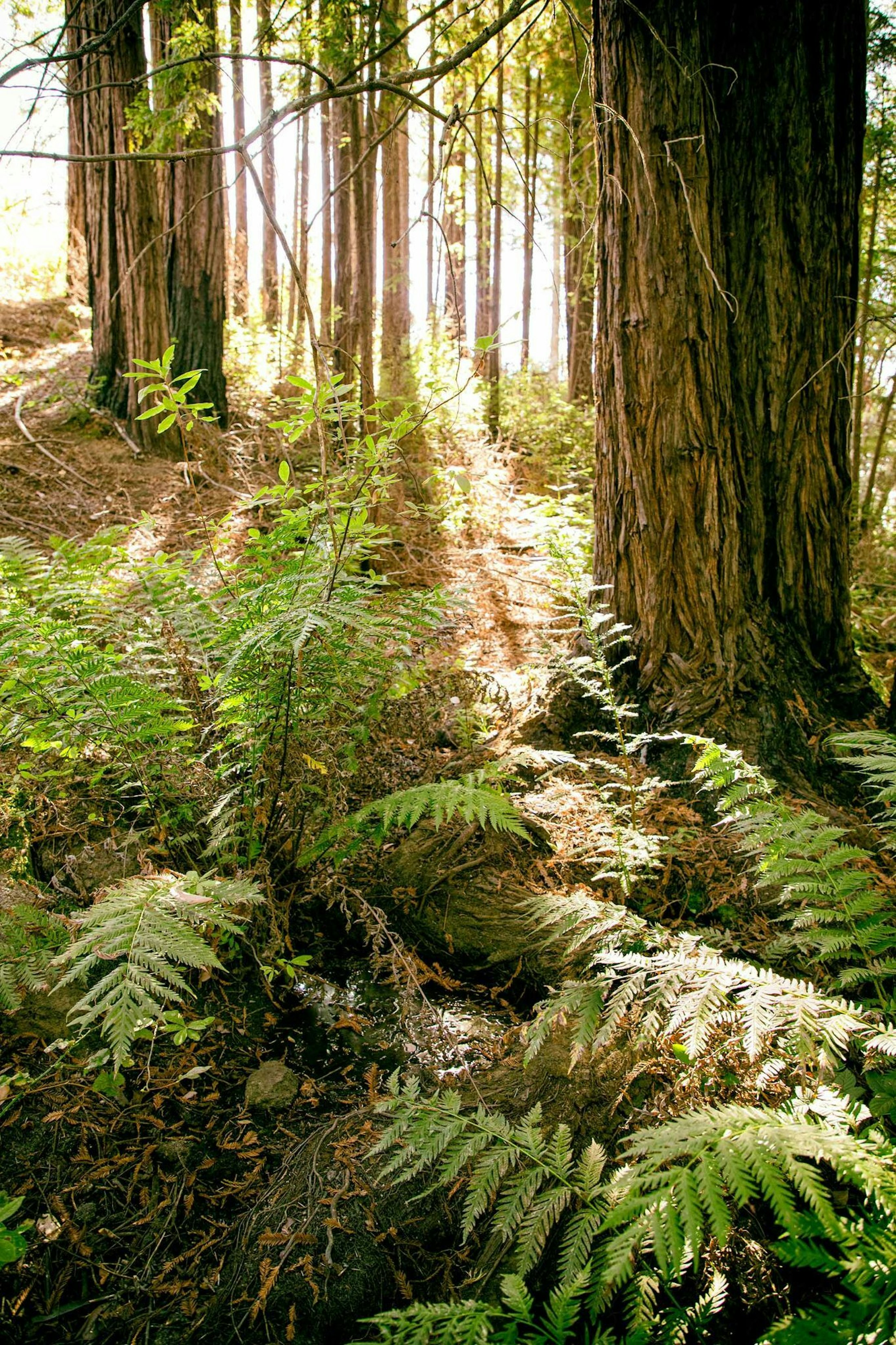


Little is known about the origins of what was once a beautiful tea house spanning a creek at Moon Mountain Vineyard. Sadly, the tea house was destroyed by the Cavedale Fire in 1996, but the old rock stairs remain.


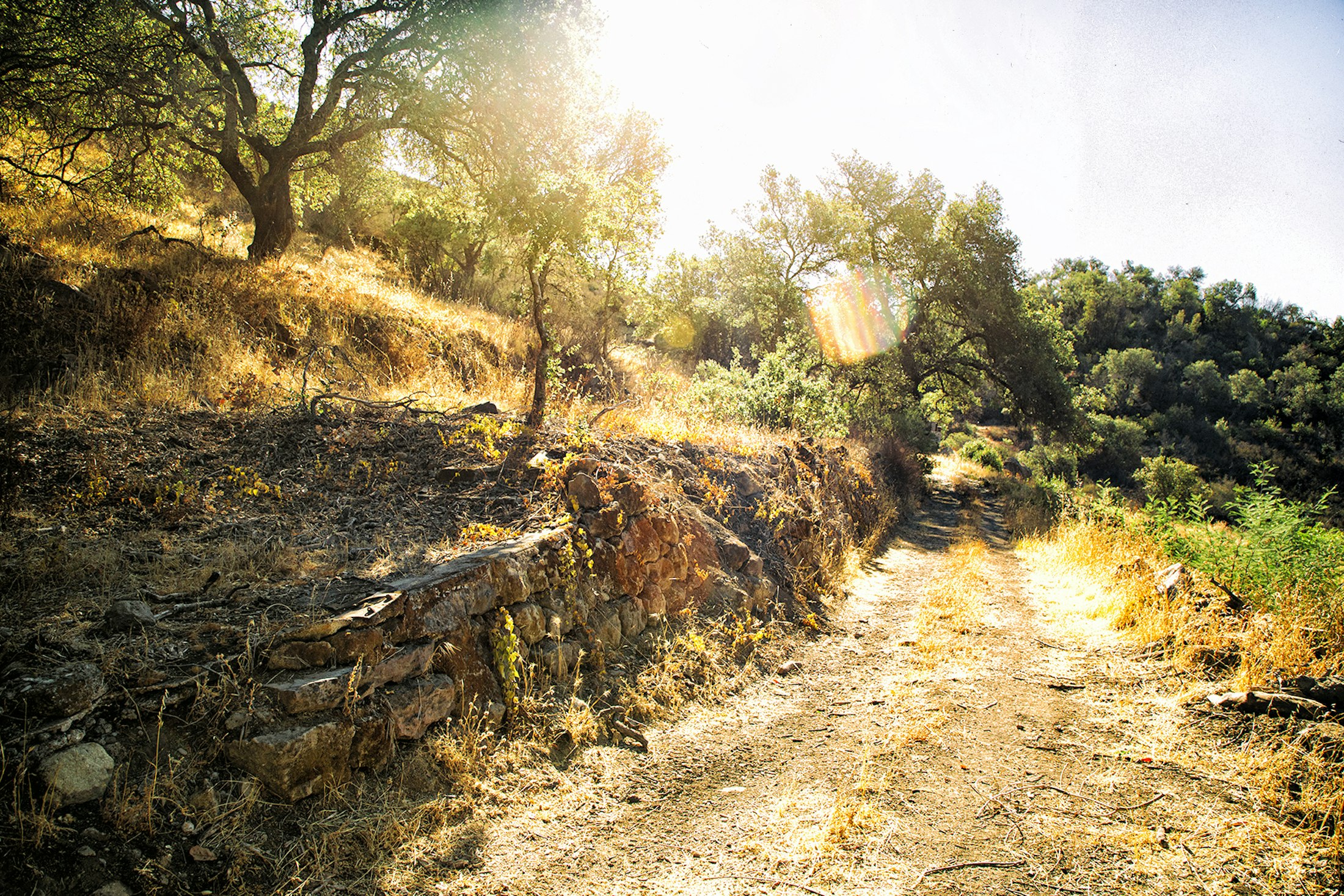
Chapter IIIProgress AmongColorful Characters
Following its founding as Goldstein Ranch, the land went through the hands of various winemaking families and investors who sought out the mountain’s exceptional microclimate and volcanic terroir.
In 1938, the Louis Martini family purchased the Goldstein Ranch, naming it Monte Rosso after its red volcanic soils. Having produced sacramental wine during Prohibition in the 1920s, Martini shrewdly anticipated its repeal and built a winery in Napa Valley in 1933. The acquisition of Monte Rosso again proved his foresight, becoming a Sonoma jewel in the Martini family’s vineyard crown.
Louis Martini held the property until the 1960s, when it was shortly known as Red Mountain Ranch.


Joe pictured with his pet buck that followed him everywhere
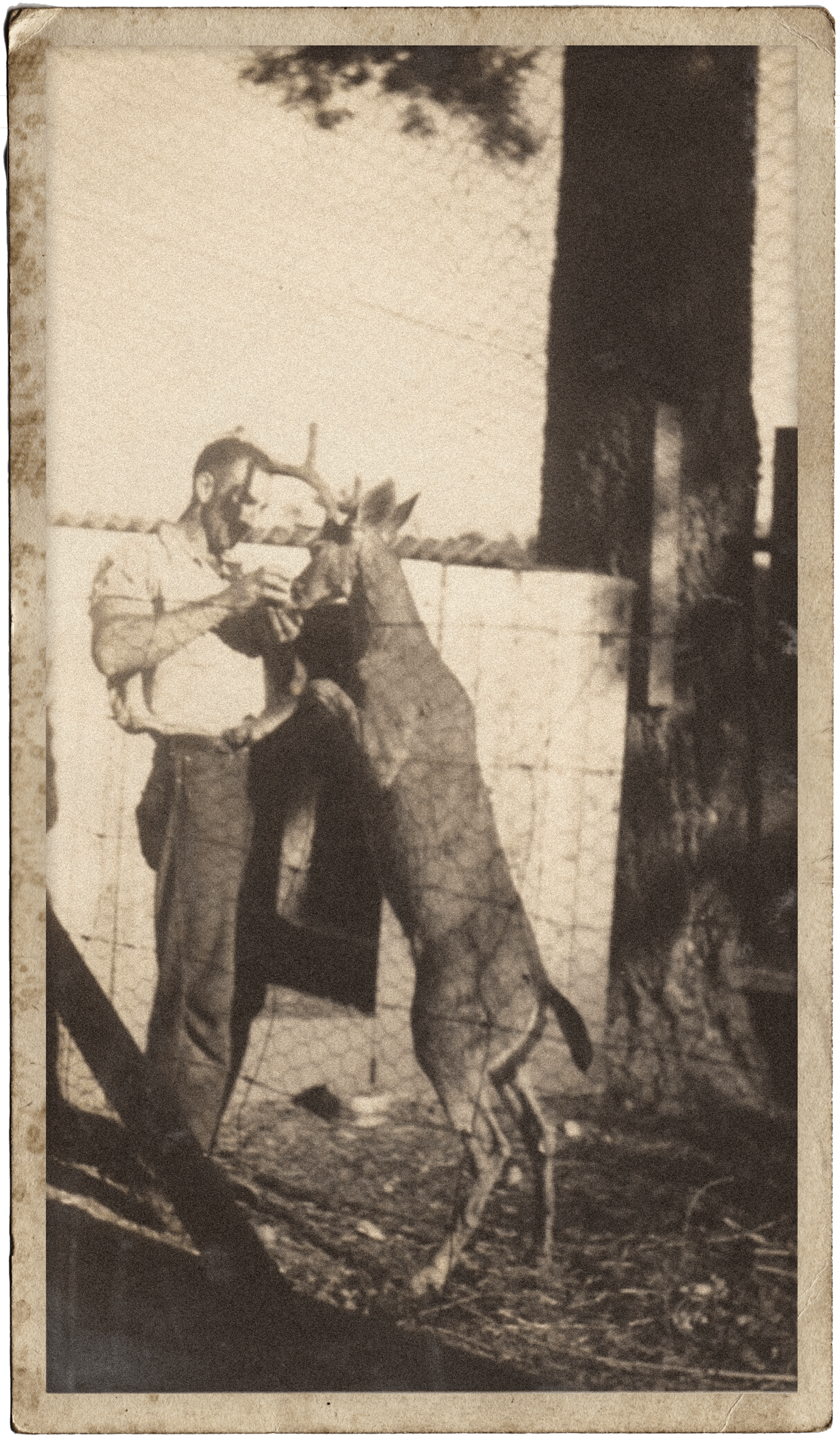
Long before the sudden international popularization of California wine at the Judgement of Paris in 1976, there were ambitious vintners in the mountains above Sonoma who had become curious about what was possible beyond the generic reds being sold by the gallon at local grocery stores.
One of these ambitious characters was an eccentric farmer by the name of Joe Miami. Joe was experimenting and perfecting mountain grape growing techniques, mentoring anybody who would listen, and helping nourish the grapes into great wines in dark cellars throughout the winter. It is believed that many of the now-legendary wines of Sonoma can be traced back to Joe Miami’s pioneering work in the 1940s and 1950s.
In the late 1960s and into the 1970s, Moon Mountain Vineyard was known as Red Mountain Ranch and owned by an enigmatic and controversial figure named Alex Horn. Accused at various times of being a cult leader, he taught the methods of Russian mystic George Gurdjieff at the ranch. Followers spent months performing back-breaking manual labor, including planting vineyards, to experience the value of physical labor. Some would later argue most of the value accrued to Mr. Horn….


After Horn’s departure, Red Mountain Ranch was renamed Glen Ellen Vineyards by its new owner in the 1970s and the grapes were sold to a number of prominent wineries including Chateau St. Jean, Kistler and Ridge. Those three wineries all featured Glen Ellen Vineyard on their labels, making these wines some of the very first vineyard-designated wines in California.


Chapter IVA winery designed toCapture terroir
The 1980s brought extensive upgrades to Moon Mountain Vineyard.
Recognizing the exceptional terroir of Moon Mountain Vineyard, a group of investors purchased the property in 1980, changed its name from Glen Ellen Vineyards to Carmenet, and embarked on constructing state-of-the-art winemaking facilities.
Drawing inspiration from the European winemaking traditions, they built the circular winery and natural rock caves, which are still in use at Moon Mountain Vineyard today. The group brought in Chalone to manage the vineyards and after a few years Chalone acquired the property.


An artist’s rendering of the classic turret, and blueprints of the winery
Right: The use permit issued to Carmenet Winery.


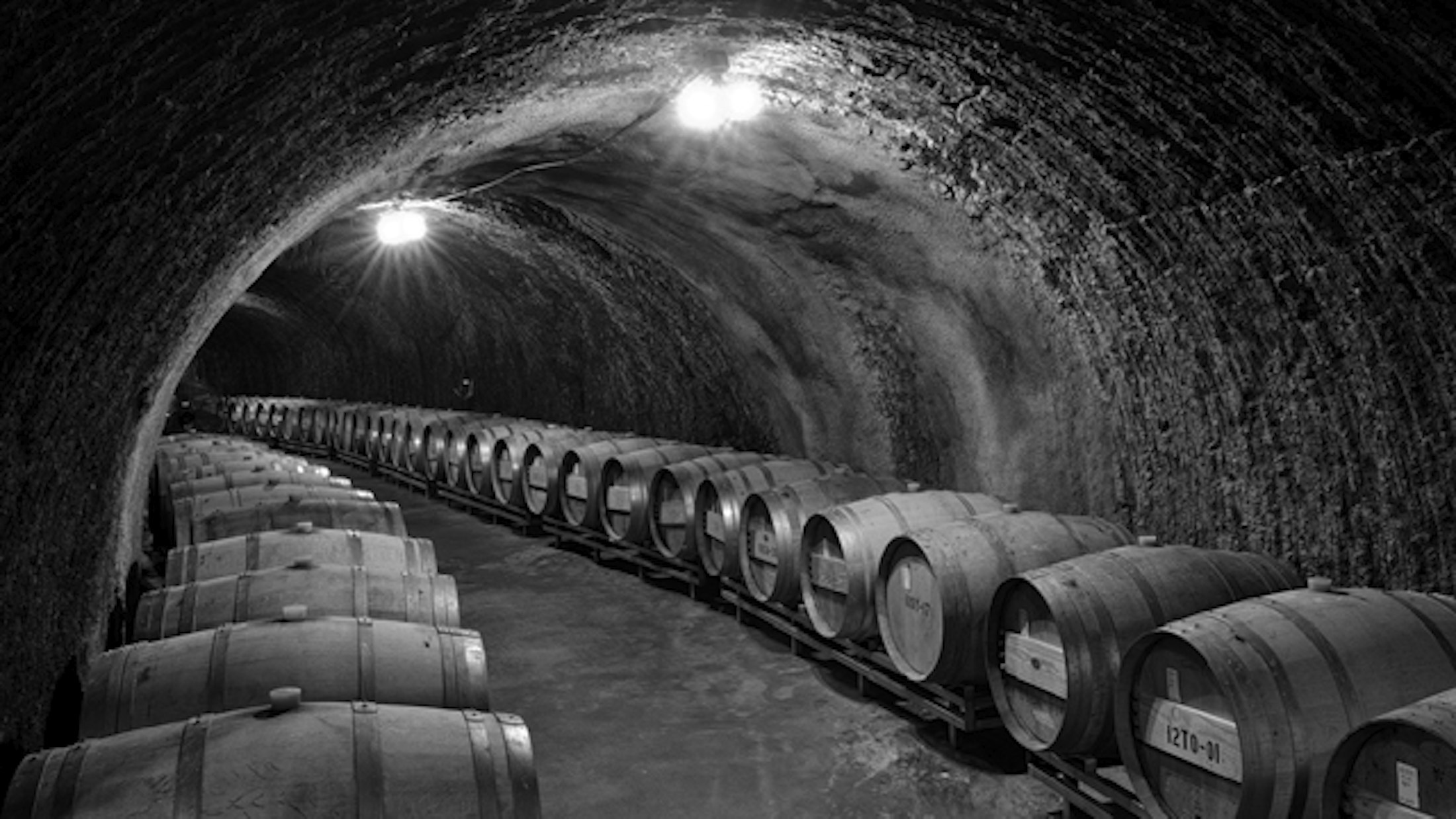
TheCaves
Excavation of the caves began in the early eighties, and was a massive undertaking.
18,000 square feet were carefully hollowed out of the mountain, and remarkably, the natural rock of the caves was left exposed to illustrate the mountain’s beauty in a unique way – from the inside.
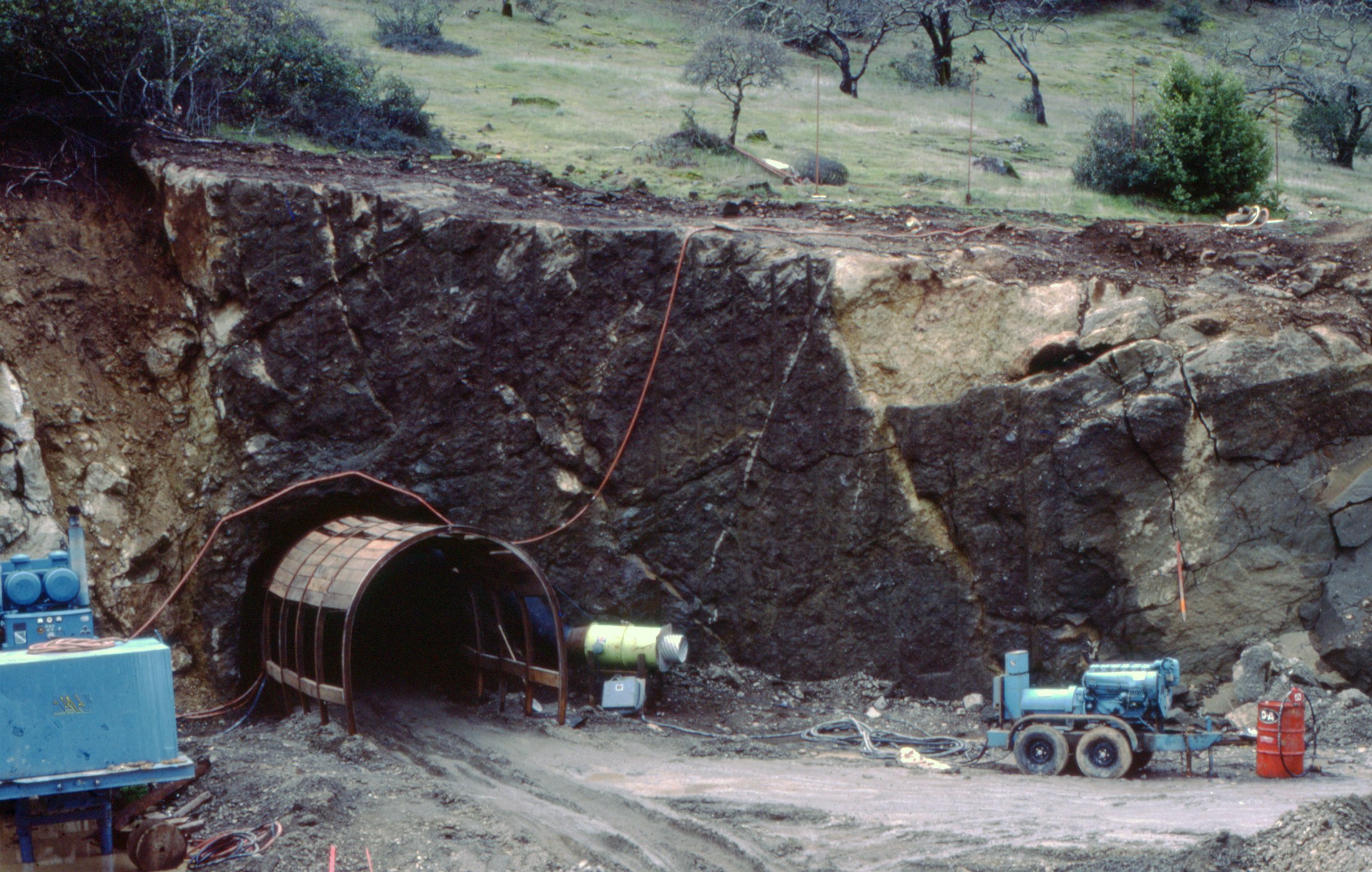



Workers operate the giant machine used to drill the caves.
The close proximity of the winery to the vineyards and of the caves to the winery was a deliberate effort to foster the gentlest handling of the grapes from harvest in the vineyards, through fermentation in the winery and into the caves for barrel aging.
The rustic beauty of our caves, pocketed deep within the mountain, becomes even more intriguing with time. The solid exposed rock creates a quiet sanctuary that remains a testament to Sonoma’s rugged winemaking history. As it nurtures our wines, it also continues to capture our imagination.
The Repris tank room foundation is modeled on Old World circular designs.

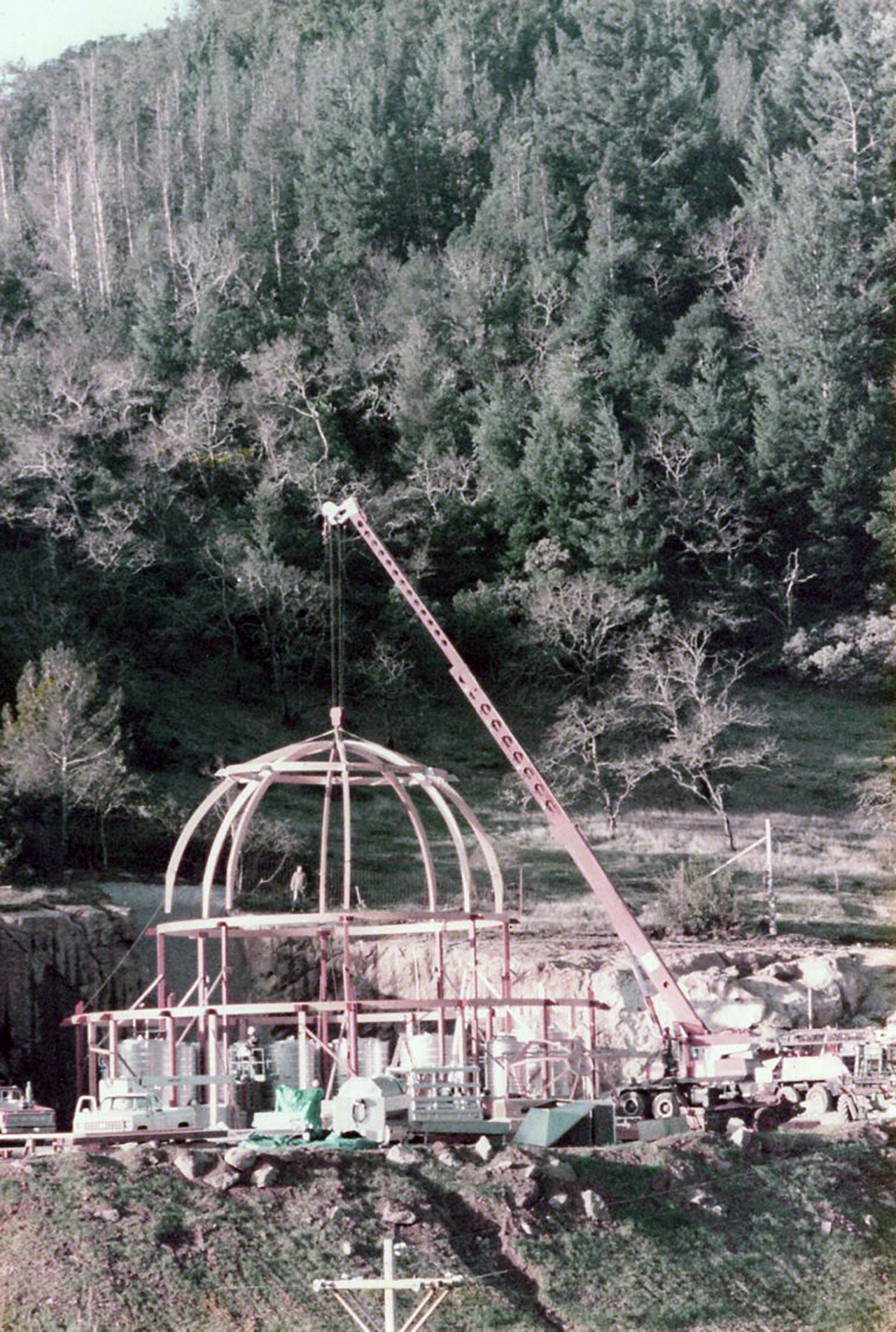


Detailed vine health maps have been integral to managing the quality of Moon Mountain Vineyard fruit for decades.
Right: A handwritten version from the Carmenet days.
Bottom: A 2019 vine health map of the same block; each vine color coded and numbered. The Repris viticulture team walks every vine row several times each growing season, meticulously assessing every vine’s individual health and recording their findings. It is a laborious process but critical to maintaining health and quality in the organic vineyards.


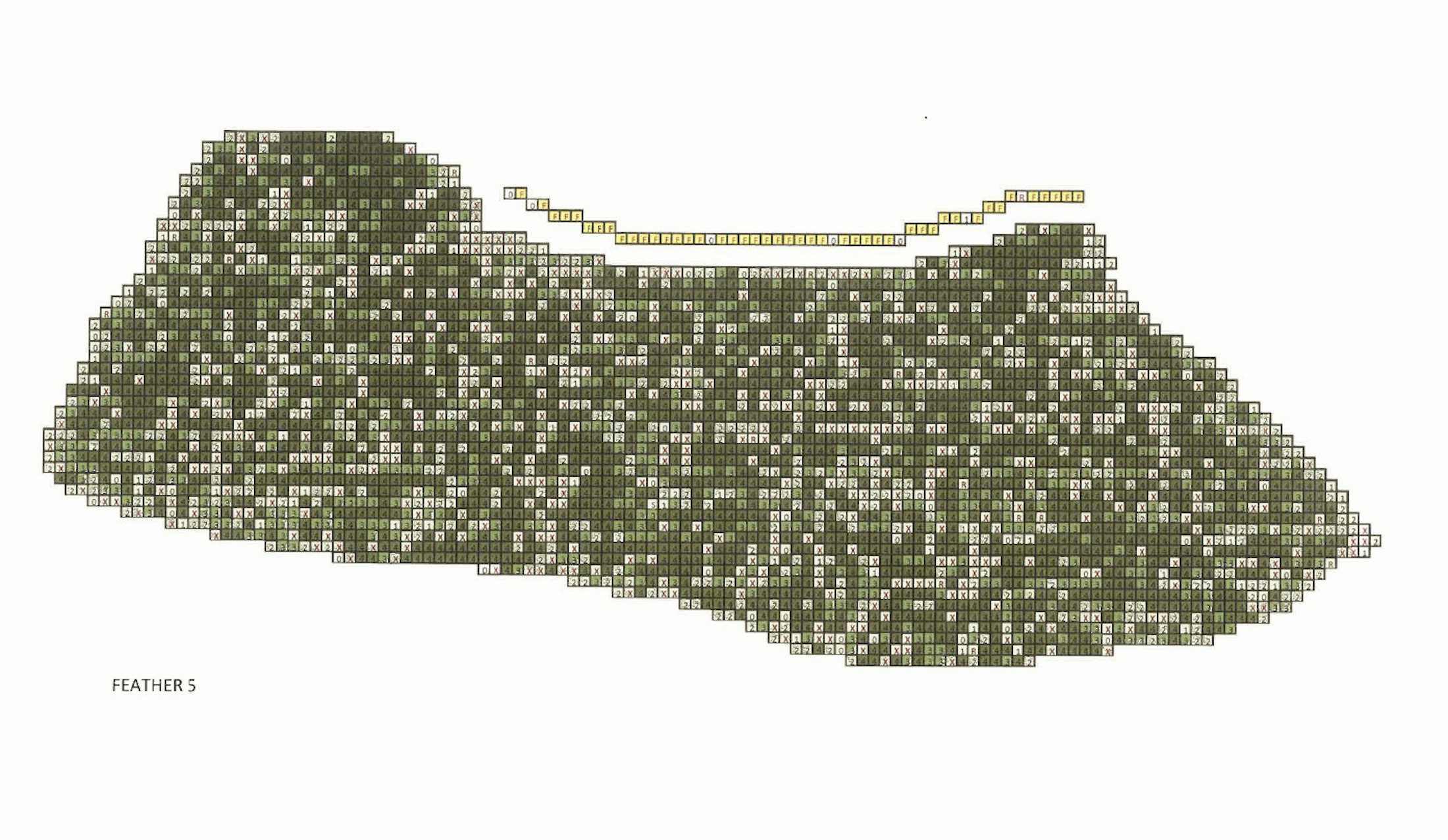

Chapter VA ChallengeLike None Other
Moon Mountain Vineyard has faced its share of adversity but none like the fire of August 1996, which was a catastrophic threat to its very existence.
The Cavedale Fire burned through nearly 70% of the vineyard, destroying everything in its path. It also created an opportunity for renewal at Moon Mountain Vineyard, and it brought together our local community.




Neighboring Sonoma wineries donated grapes to Carmenet, enabling them to bottle a 1996 vintage despite the fire’s devastation.
For Carmenet, the 1996 vintage was defined by a profound sense of gratitude to the Sonoma community that provided its support in a time of extraordinary tragedy.



Following the fire, legendary organic viticulturist Phil Coturri was brought in to replant the vineyards based entirely on organic farming principles. Moon Mountain Vineyard has now been farmed organically for more than 25 years and, way ahead of its time, was certified organic by the CCOF back in 2002. As such, Moon Mountain Vineyard stands as one of the earliest pioneers of organic wine grape farming in America.

Chapter VIThe Rise of ReprisPursuing Excellence
Jim Momtazee purchased Moon Mountain Vineyard in 2011 to pursue his passion for world class wines.
Jim had fallen in love with the land and set out on a mission to become a steward of the historic property with a multi-generational approach to its preservation. His mission was to continue Moon Mountain Vineyard’s legacy of producing world-class wines under a new estate-grown wine label: Repris.

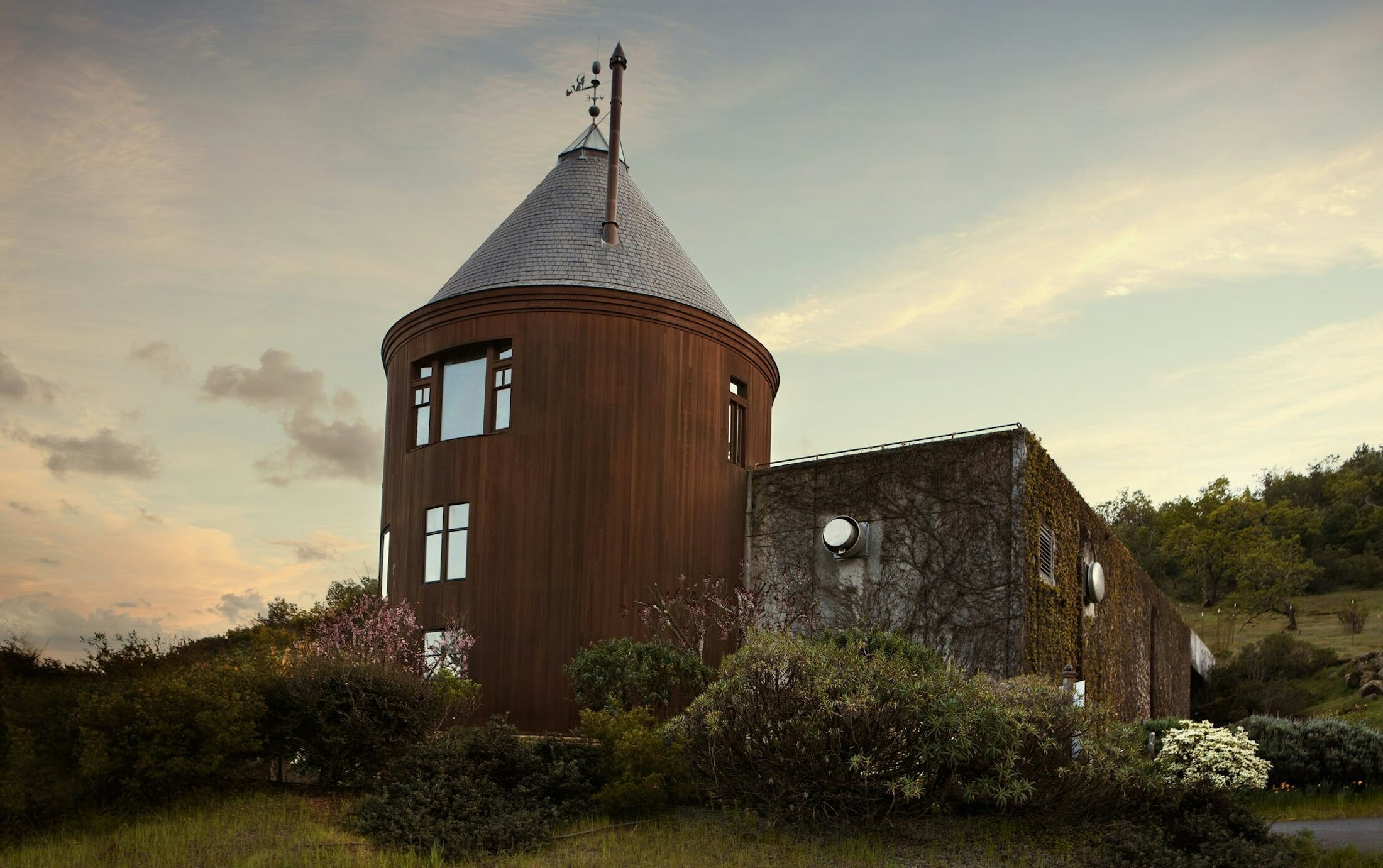
Our iconic turret greets guests as they arrive at Moon Mountain Vineyard, and offers panoramic views of the property while they enjoy their tasting.




Like Emmanuel Goldstein, the first owner of Moon Mountain Vineyard, who in 1894 pioneered the creation of one of our state’s first wine organizations (the California Wine Association), the Repris team more than 100 years later spearheaded the effort to create the Moon Mountain District AVA.
In 2013 Moon Mountain District was recognized as an American Viticultural Area, officially designating it as home to some of the finest historic wineries and vineyards in the country. The formation of Moon Mountain District recognizes the exceptional terroir of this special mountain range and its significant role in the history of wine in California.

More than 125 years after the first pioneers arrived at Moon Mountain, we remain committed to protecting the legacy of this special terroir.
Our mission is to craft wines of place and purpose, representing the distinctiveness and charm of this remarkable mountain.
